Pari Mahal Srinagar: Timings, Time to Visit & Things to Know
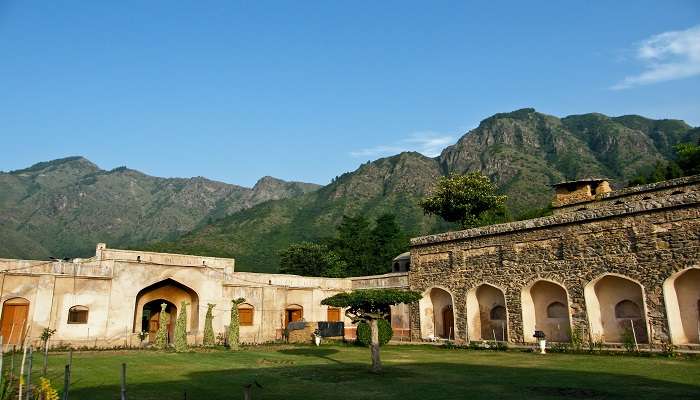
Nestled in the heart of Srinagar, the summer capital of Jammu and Kashmir, lies a captivating architectural marvel – the Pari Mahal. This stunning palace, perched atop a hillock overlooking the Dal Lake, is a testament to the region’s rich cultural heritage.
Built in the 17th century by Prince Dara Shikoh, the Pari Mahal, or the ‘Abode of Fairies,’ is a breathtaking example of Mughal architecture. Its terraced gardens, cascading fountains, and intricately carved stone pavilions transport visitors to timeless beauty and serenity. Whether you seek a tranquil escape or a glimpse into history, the Mahal promises an enchanting experience that will leave you spellbound.
About Pari Mahal
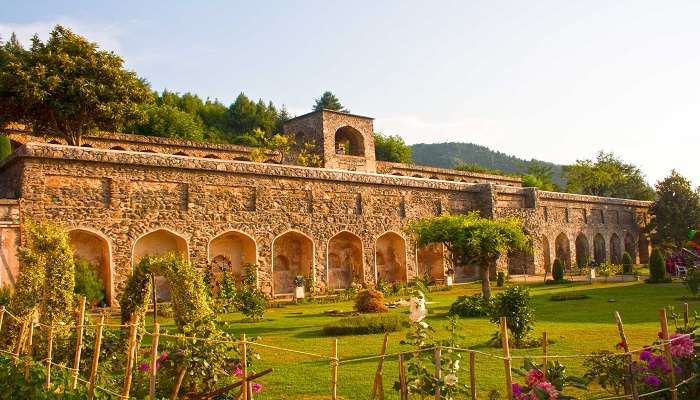
Pari Mahal, also known as the ‘Palace of Fairies’, is a historic garden on the Zabarwan mountain range overlooking Dal Lake in Srinagar. Built-in the mid-1600s by Mughal prince Dara Shikoh, it served as a library and observatory for astronomy and astrology. The site was constructed on the ruins of a Buddhist monastery and dedicated to Dara Shikoh’s Sufi teacher, Mullah Shah. The garden features six terraces with reservoirs, archways, and ancient structures showcasing a blend of Islamic architecture and cultural influences. Its beautiful terraces and panoramic views make it a unique historical and architectural site.
Also Read: Wildlife Sanctuaries In Kashmir
History Of Pari Mahal
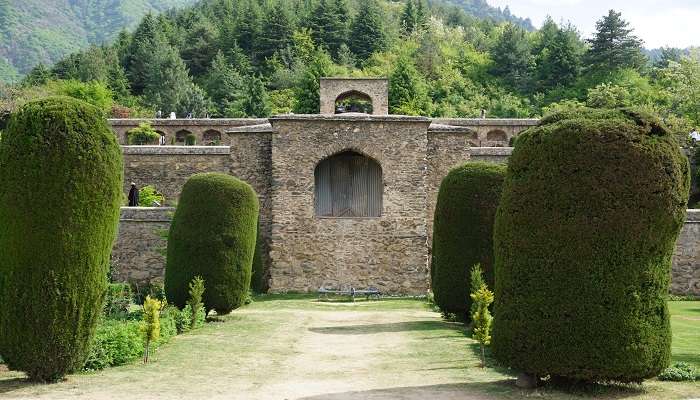
Pari Mahal, also known as Peer Mahal or the Palace of Fairies, was constructed in the mid-17th century by Dara Shikoh, the eldest son of Mughal emperor Shah Jahan. According to legend, situated in Srinagar, Kashmir, it served as a residence for Haano’s prince Maano. Dara Shikoh, deeply influenced by Sufi teachings from Mulla Shah, a nearby saint, built the Mahal as a tribute to his guru and as a centre for his spiritual and intellectual pursuits. Beyond its initial role as a Buddhist monastery, Dara Shikoh transformed Pari Mahal into a school of astrology, where he and his disciples studied astronomy and taught astrology. The Mahal, “the abode of fairies,” comes from a story about fairies and princesses who supposedly visited the garden at night during Dara Shikoh’s time. Today, the Mahal is essential because of its history. It reflects Dara Shikoh’s belief in bringing cultures together and his legacy as someone who cared about knowledge and the arts.
Architecture Of Pari Mahal
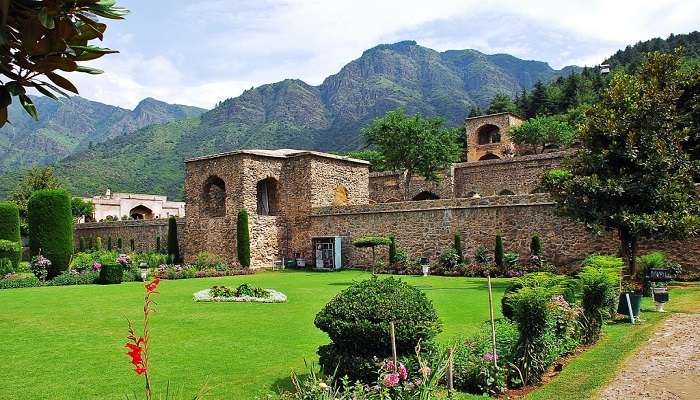
Pari Mahal is a stunning example of architecture blending Mughal, Persian, and Islamic styles. The entrance on the lowest level led to a gate and water tank. The second level had a library, while the third was a spiritual place for prayer and meditation for Dara Shikoh and his followers. The fourth level had an observatory with telescopes and instruments for studying the stars. The fifth level was a garden with many different flowers and fruit trees. On the sixth level was a pavilion with a domed hall and fountain. The seventh level offered expansive views of Dal Lake and Srinagar. Pari Mahal’s advanced water system used gravity and pressure to draw water from the Cheshma Shahi spring, which Dara Shikoh also built.
Related Post: Houseboats In Srinagar
Timings And Entrance Fees

Pari Mahal is open to visitors daily from 9:30 AM to 7:30 PM. This schedule allows ample time for tourists to explore the gardens and enjoy the panoramic views of Dal Lake and the surrounding areas. The entry fee for the Mahal is INR 10 per person, which makes it accessible to everyone interested in exploring this historic Mughal garden.
Best Time To Visit The Mahal
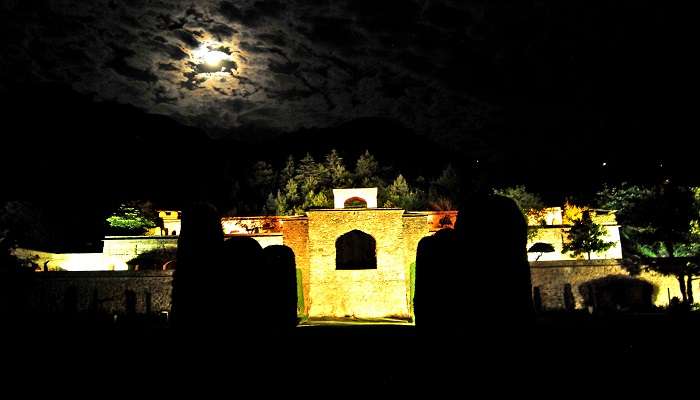
Pari Mahal is a historical gem that attracts visitors with its Mughal architecture and serene gardens. To make the most of your visit, you must visit this place during:
Spring (April to June)
Spring is a fantastic time to visit Pari Mahal. The weather is mild, ranging from 14°C to 30°C. The gardens are in full bloom, displaying vibrant flowers and lush greenery. It’s an excellent time for photography and leisurely walks.
Summer (June to August)
Summer in Srinagar is relatively cool compared to other parts of India, with temperatures typically between 20°C to 30°C. This period is excellent for those looking to escape the heat of the plains. The evenings are enjoyable making it a good time to enjoy the scenic views of Dal Lake and the surrounding mountains.
Autumn (September to October)
Autumn is another great time to visit Pari Mahal. The temperatures are comfortable, and the gardens remain beautiful. The changing colors of the leaves add a unique charm to the landscape making it a perfect season for nature lovers and photographers.
Related Post: Shopping In Kashmir
How To Reach

Reaching the Mahal in Srinagar is straightforward, and multiple transportation options are available. They are as follows:
By Air
The nearest airport is Srinagar International Airport (SXR), around 12 km from the Mahal. Several airlines operate regular flights from major cities like Delhi, Mumbai, and Bangalore. Upon arrival, you can hire a taxi or use other local transport to reach Pari Mahal, which is about a 30-minute drive from the airport.
By Rail
The closest central railway station is Jammu Tawi, approximately 300 km from Srinagar. Udhampur Railway Station is another option about 200 km from Srinagar. You can hire a private cab from these stations or take a state-run bus to Srinagar. The drive from Jammu Tawi to Srinagar takes around 8-9 hours.
By Road
Srinagar is well-connected by National Highway 44. You can drive from nearby cities or hire a taxi. From Srinagar city centre, Pari Mahal is just a 15-minute drive. Public buses can take you close to Pari Mahal, but you might need to walk a bit or hire a taxi to get to the last stretch.
You May Also Like To Read: Things To Do In Kashmir
Pari Mahal in Srinagar is a lovely place blending Mughal architecture with stunning natural scenery. You can explore terraced gardens, admire historic buildings, and enjoy panoramic views of Dal Lake and the mountains. It’s a memorable experience for visitors! If you’re going to Kashmir, visit these nearby places, each offering something special to your trip. Are you ready for a fantastic adventure? Book your trip to Kashmir today and immerse yourself in the beauty and history of the Pari Mahal and neighbouring wonders. Your enchanting journey awaits!
For our editorial codes of conduct and copyright disclaimer, please click here.
Cover Image Credit: Subhashis Pattadar for Wikimedia Commons
Frequently Asked Questions About Pari Mahal
Why is the Pari Mahal famous?
Pari Mahal is famous for its historic Mughal architecture, characterized by its elegant design and intricate details, as well as its breathtaking views overlooking Dal Lake, making it a popular tourist destination in Srinagar, Kashmir.
What are the nearby attractions to explore along with Pari Mahal?
What are the features of Pari Mahal architecture?
The architecture of the Mahal includes seven terraced gardens that cascade down the hillside, showcasing Mughal garden design principles. It features intricate stucco work, Persian calligraphy, and arched doorways typical of Mughal craftsmanship.
Are guided tours available at Pari Mahal?
One can easily find the tour guide to explore Pari Mahal.
What are the opening hours of Pari Mahal?
Pari Mahal is open from 9:30 am-7:30 pm, Monday to Saturday.
Are photography and videography allowed at Pari Mahal?
One can easily click picture and record videos at the premises. However, it is advisable to confirm it from the management of the attraction to avoid the hassle.
How can one reach Pari Mahal from Srinagar?
As it not easy to find public vehicle to reach the Mahal, it is advisable to travel via car or cab.
People Also Read:
Taj Mahal Dashrath Mahal Jahangir Mahal

We all have to begin somewhere. This is where I start and I hope that my writings encourage you to begin. To new beginnings and conquering new places!











